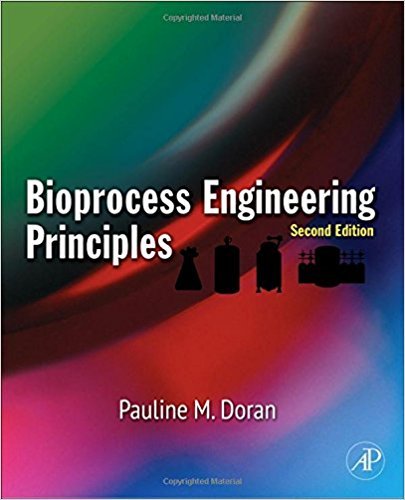Book Review: "Bioprocess Engineering Principles" by Pauline M. Doran

No one should be writing college textbooks. This is especially true in the sciences. This does not mean that colleges should stop using textbooks nor that students should stop reading. College textbooks suck: they may contain the information on a subject, but the chapters will be arranged in any random order, with apparently superfluous information that seems to have only a tenuous association with the main topic. For example, I was recently examining a textbook on molecular biology that dedicates the first two-thirds to that topic and then the last eight chapters are entirely about the immune system. Why? Because one of the authors does research on the immune system and I can only assume she thought it was interesting.
It's actually worse than that, as my former organic chemistry professor pointed out: because money in textbooks is made by selling such small volumes, the authors/publishers will try to get professors to agree to use said textbook ahead of time. Too often this means: "I will only have my students buy your book on animal physiology if you include a chapter on animals and flowers, because I like flowers", and the inverted incentive structure leads to a jumbled book that's difficult to learn from.
"Bioprocess Engineering Principles" is written for scientists, not students, and therefore is the book that all other college textbooks should aspire to and emulate. It starts off by explaining what the field of bioprocess engineering is, namely the practice of taking innovations that occurred on a laboratory bench and scaling them up to an industrial level. Chapters two and three cover engineering calculations and the presentation and analysis of data, respectively. Both of which are tools that will be needed in future chapters. Then the book immediately dives into the different things an engineer will need to account for when scaling up a process, such as mass and energy balances, fluid dynamics, unit operations and more, with the final chapter being the design of industrial-scale bioreactors.
One chapter I particularly enjoyed was the chapter on fluid flow and mixing, largely because I knew very little about it. I really appreciated it's definition of what constitutes a fluid and it's explanations of viscosity and apparent-viscosity. I learned about the difference between Newtonian and non-Newtonian fluids as well as the difference between laminar and turbulent flow. There's much more in the chapter, as well as the book, but the newness of the subject and the thoroughness with which it's presented really made that chapter stand out for me.
Because this book is highly specific, I only recommend reading this book if the subject sounds interesting to you, like if you read this review and thought to yourself "I should totally read this book." You should also read this book if you are writing a college textbook, so you can learn how to write something decent for once.